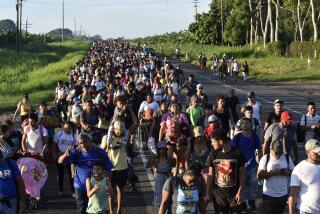Restrictive border policy Title 42 ends this week, leaving imprint on future of asylum
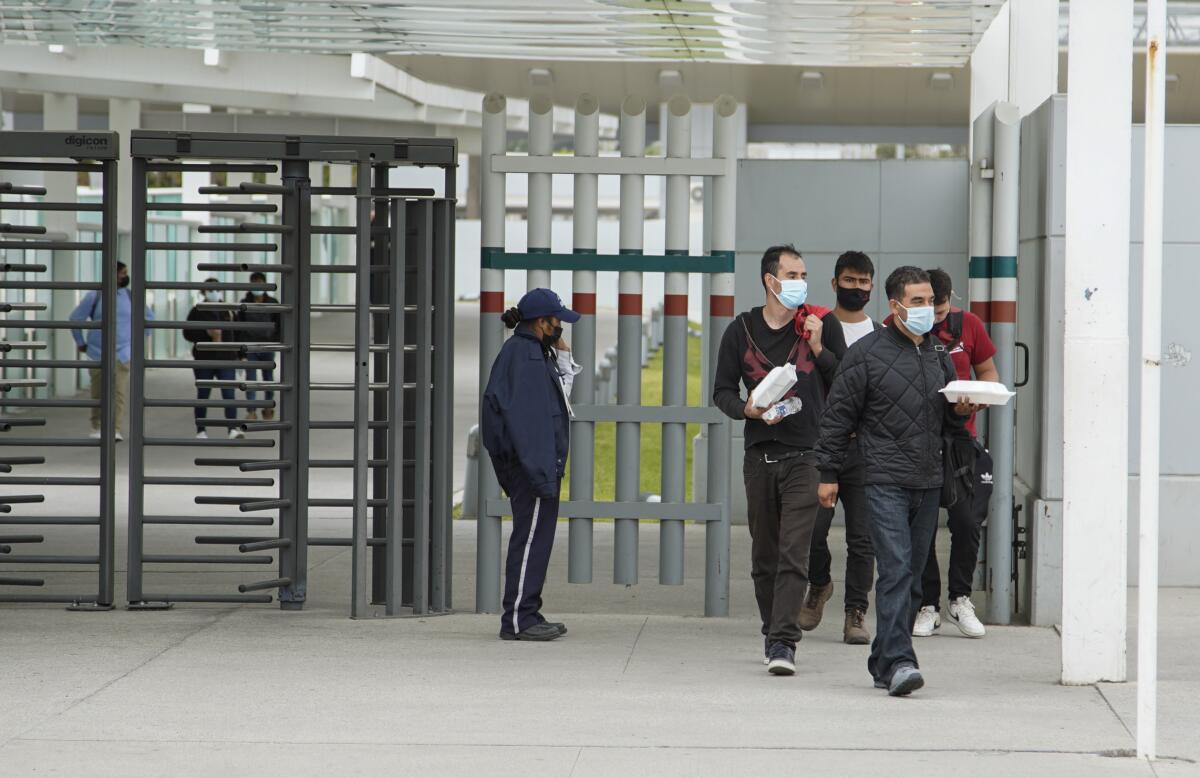
The first day that asylum seekers could make appointments through their smartphones to request protection at U.S. ports of entry, a 22-year-old mother and her three children in Tijuana rushed to try to secure their own place in the digital line.
More than three months later, she and thousands of other asylum seekers waiting in Mexico are still trying.
Though the pandemic-era policy that created this smartphone appointment process — Title 42 — is set to end Thursday, asylum seekers’ experiences aren’t likely to change anytime soon.
A decades-old measure invoked by the Trump administration in March 2020, Title 42 was based on a public health order from the Centers for Disease Control and Prevention and used to block asylum seekers and other migrants from entering the United States. It also allows border officials to expel those migrants to Mexico regardless of their nationality without reviewing their requests for protection if they crossed without permission.
Though it was presented as a way to slow the spread of COVID-19, revelations from whistleblowers and statements from politicians have made clear that it has been largely used in an effort to deter migration. Now that the declared health emergency is ending, so will Title 42 orders. Many predict border crossings will increase in the short term.
But the policy has left its mark, with restrictions never before seen at the border and uncertainty about the coming weeks.
While the Biden administration has promised expanded pathways that would offer certain migrants alternatives to the dangerous journey to the U.S.-Mexico border, many details remain to be determined. In the meantime, the federal government plans to restrict asylum eligibility and ramp up speedy deportations once the pandemic policy goes away.
“Our model is as follows: Build lawful pathways, give individuals an opportunity to reach the United States, safely, in an orderly way,” Department of Homeland Security Secretary Alejandro N. Mayorkas said last month. “And then deliver a consequence for those who do not avail themselves.”
Title 42, and the restrictionist policies that came before it, has created a backlog of waiting asylum seekers in northern Mexico. Knowing this backlog could lead to an increase in border crossings, the Biden administration is following a longtime border strategy used by Democratic and Republican administrations to try to stop people from crossing.
Among the plans, the administration will still require smartphone appointments to request asylum, a controversial move that is likely to be challenged in court and that echoes many of the decisions made by former President Trump.
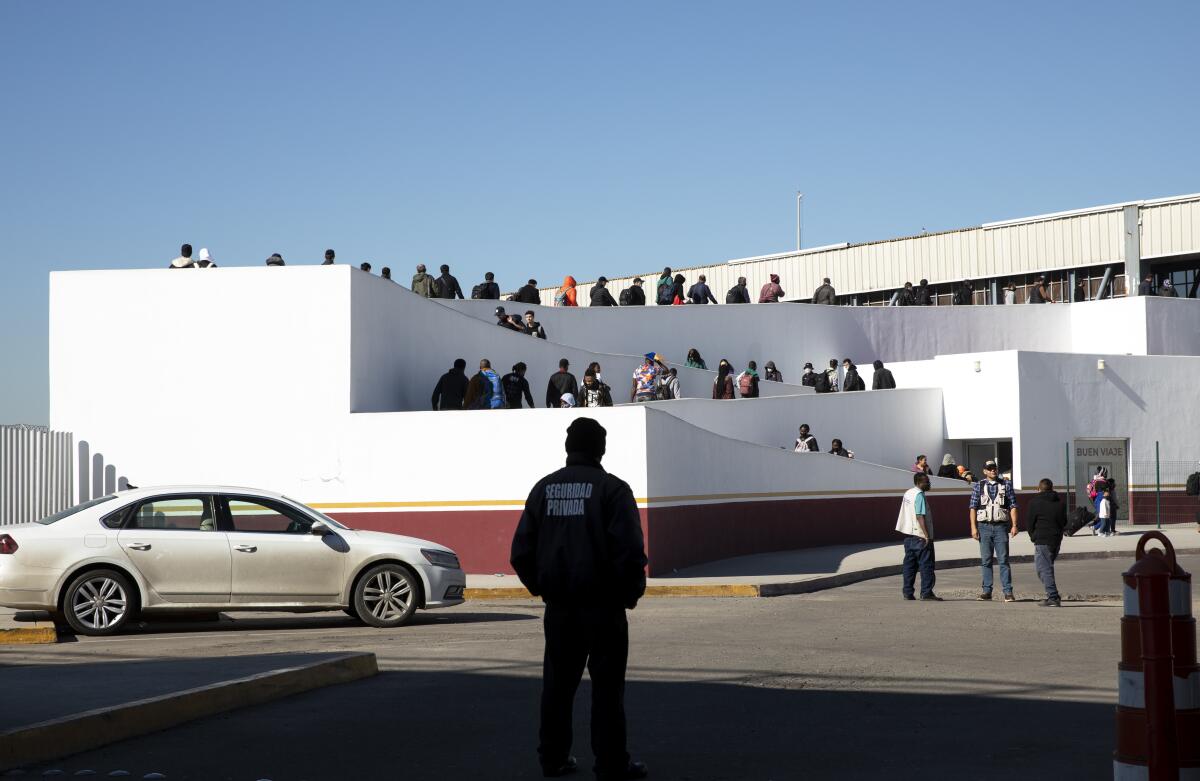
“These policies are created to slow and stop migration because they don’t want people to come — not to make a more perfect system,” said Nicole Ramos, an attorney and director of Al Otro Lado’s Border Rights Project.
The risks to waiting migrants — and to those sent back without fully considering their protection requests — can be deadly.
Many mothers the San Diego Union-Tribune has spoken with are stuck in dangerous situations while waiting for appointments in Mexico through the CBP One smartphone app, which has been rife with problems.
One woman said her family had already been threatened where they were hiding, and the people housing them no longer wanted to help. She said her only family members who haven’t been killed are in the United States, and she has nowhere else to go. This article isn’t identifying her or the other women because of their vulnerable situations.
After Title 42
Title 42 managed to do what many other policies couldn’t — cut off access to asylum for thousands of people who had fled their homes. With that precedent set, it has opened the door for the Biden administration to bolster its deterrence strategy.
“We’ve had the right to asylum since 1980, and this is the first time it was massively stopped in a formal way,” said Adam Isacson of the Washington Office on Latin America. “It’s the first time we massively denied protection to people who needed it on this scale since World War II. We don’t really know the full human cost of that.”
Human Rights First documented more than 13,400 violent attacks on asylum seekers stuck waiting in Mexico because of Title 42 during the Biden administration’s first two years in office.
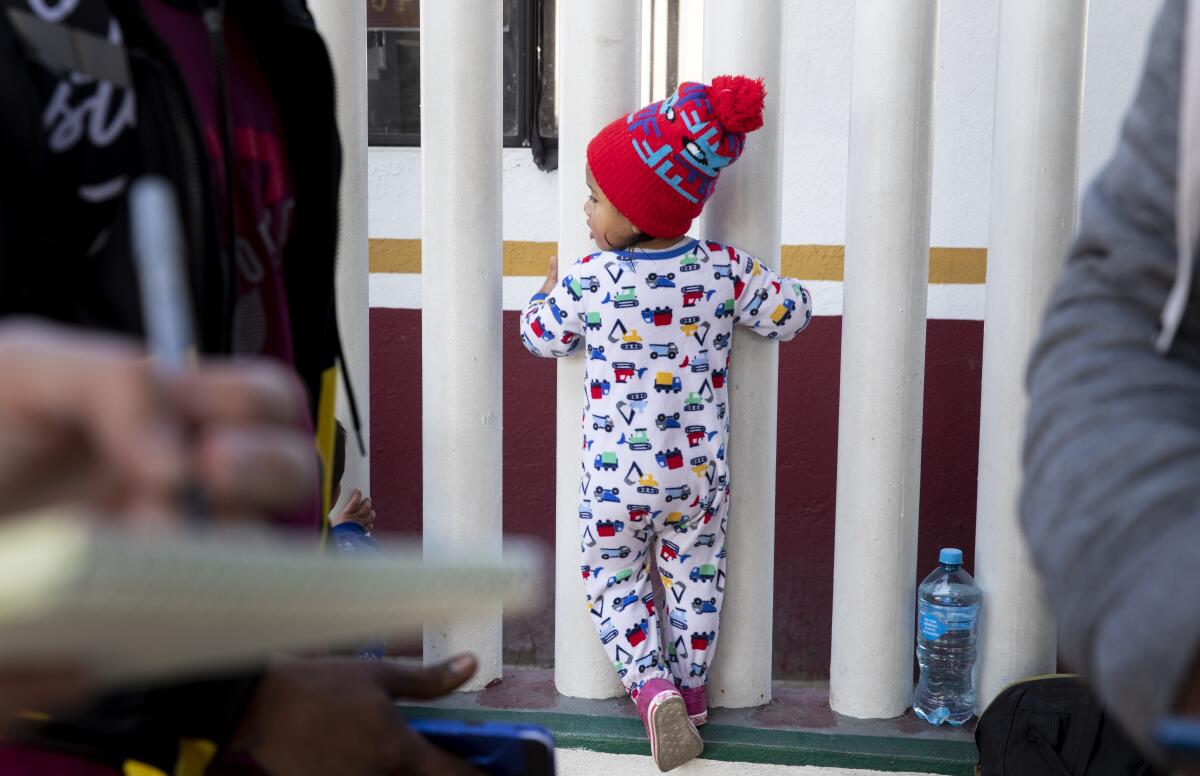
As the policy goes away, some of the vestiges remain. That includes requiring asylum seekers to use the smartphone app to request asylum by appointment at ports of entry.
Administration officials are also working to finalize a rule that would largely make migrants ineligible for asylum if they enter the U.S. without permission or come to a port of entry without an appointment and fail to apply for protection in another country on the way.
Beginning Thursday, the Department of Homeland Security said it will rely significantly on “expedited removal,” a fast-track process to preliminarily assess migrants’ requests for protection while they wait in Border Patrol custody and deport those who don’t qualify within days or a few weeks.
Mexico has agreed to accept some deported migrants who are not Mexican, though the specifics remain unclear. Unlike expulsions, those deportations will come with heavy consequences — five-year bans on returning to the United States and possible criminal prosecution — but could appear to migrants like little has changed.
“If Mexico does agree to take back deported people at the sort of rate or variety of countries that they already are, then it’s not going to look too different from the present day,” Isacson said.
These plans echo several Trump administration policies. The former administration similarly restricted the number of asylum seekers who could cross at ports of entry each day. It held asylum seekers in Border Patrol stations until their asylum claims could be reviewed, resulting in more denials than usual in the early stages of the process.

It also tried to make those who crossed the border without permission ineligible for asylum, as well as those who passed through other countries between the country they fled and the United States. Under the latter policy, human rights observers documented cases of Cameroonian asylum seekers who were deported by the U.S. and subjected to torture and other violence because they had been disqualified from protection.
Other developments also resemble the former president’s tactics.
On Tuesday, the Department of Defense announced that it would send 1,500 active-duty troops to help border agents fill “capability gaps.” In 2018, Trump sent 5,800 troops to the border amid the arrival of a caravan of thousands of migrants from Central America.
In initial talks with the Trump administration, Mexican officials reportedly refused to accept deportations of non-Mexicans. With the precedent of Title 42 expulsions, the Biden administration has been able to get its neighbor to sign on.
Unlike the Trump administration, the Biden White House has promised to create more options for people in the hemisphere to come to the United States without requesting asylum at the border.
“It’s been a mixed bag of really big sticks and a number of carrots that this administration is trying to plant and whack at the same time,” said Angela Kelley, a policy advisor to the American Immigration Council and the American Immigration Lawyers Assn.
There are fewer carrots than sticks.
One component allows certain citizens of Venezuela, Haiti, Nicaragua and Cuba to apply for temporary entry. More than 95,000 people from those countries arrived from October through April, according to the Department of Homeland Security. Another program, still in the works, will reunite families from El Salvador, Guatemala, Honduras and Colombia who have pending green card petitions.
U.S. officials are also establishing refugee processing centers in Guatemala and Colombia, but officials noted last month that it would be “weeks” before the first two centers open.
Senior administration officials sent a memo Friday to White House staff, urging Republicans to stop “pushing a MAGA agenda of chaos” and hammering home the argument that the administration plan is “rooted in enforcement, deterrence and diplomacy.”
A legacy of deterrence
The asylum system was created by the Refugee Act of 1980, which codified the obligations that the United States had agreed to after the Holocaust in meetings with the United Nations. It promised protection to people who could show they faced persecution in their home countries on account of their race, religion, nationality, political opinion or membership in a social group, such as the LGBTQ+ community.
The key to accessing the system is getting to U.S. soil.
Though the United States has a long history of turning away migrants — including Jewish people during the Holocaust — many human rights observers say the current deterrence strategy for asylum seekers ramped up throughout recent presidential administrations.
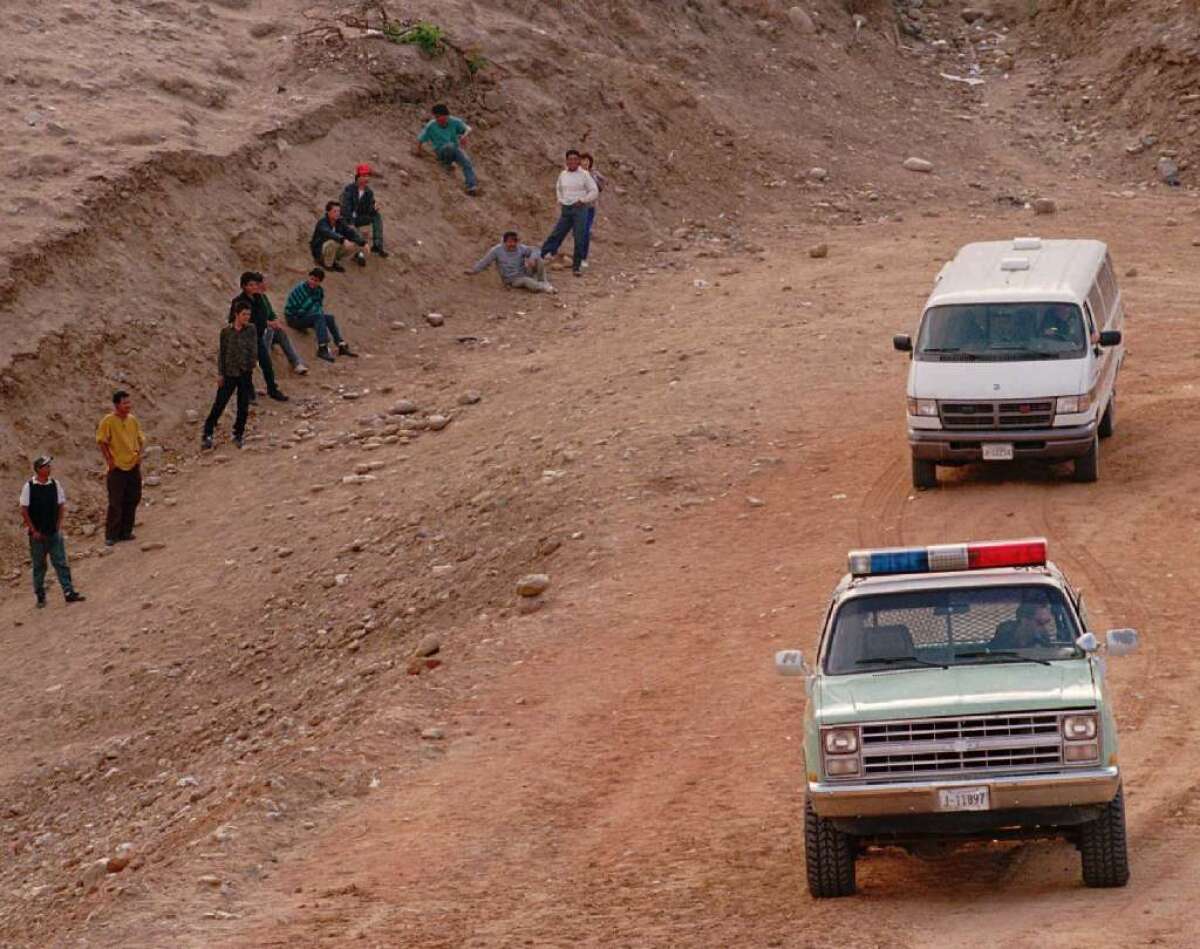
Under former President Clinton, the federal government first put into writing the practice of “prevention through deterrence.” The idea was to make getting to and across the border so difficult and painful that people decided to stay away.
While Clinton and former President George W. Bush made crossing the border more difficult, it was under former President Obama that the federal government began restricting access to the asylum system with policies that cut off access to U.S. soil.
Partway through Obama’s second term, the number of people seeking asylum at the border — particularly families and children — increased.
Isacson, who has worked on human rights issues related to Latin America for nearly three decades, recalled that was when he first heard critics referring to the asylum system as a “loophole” or “scam.”
When large numbers of Haitians arrived in Tijuana in 2016, the U.S. government in coordination with Mexican officials implemented an appointment system at ports of entry for the first time.
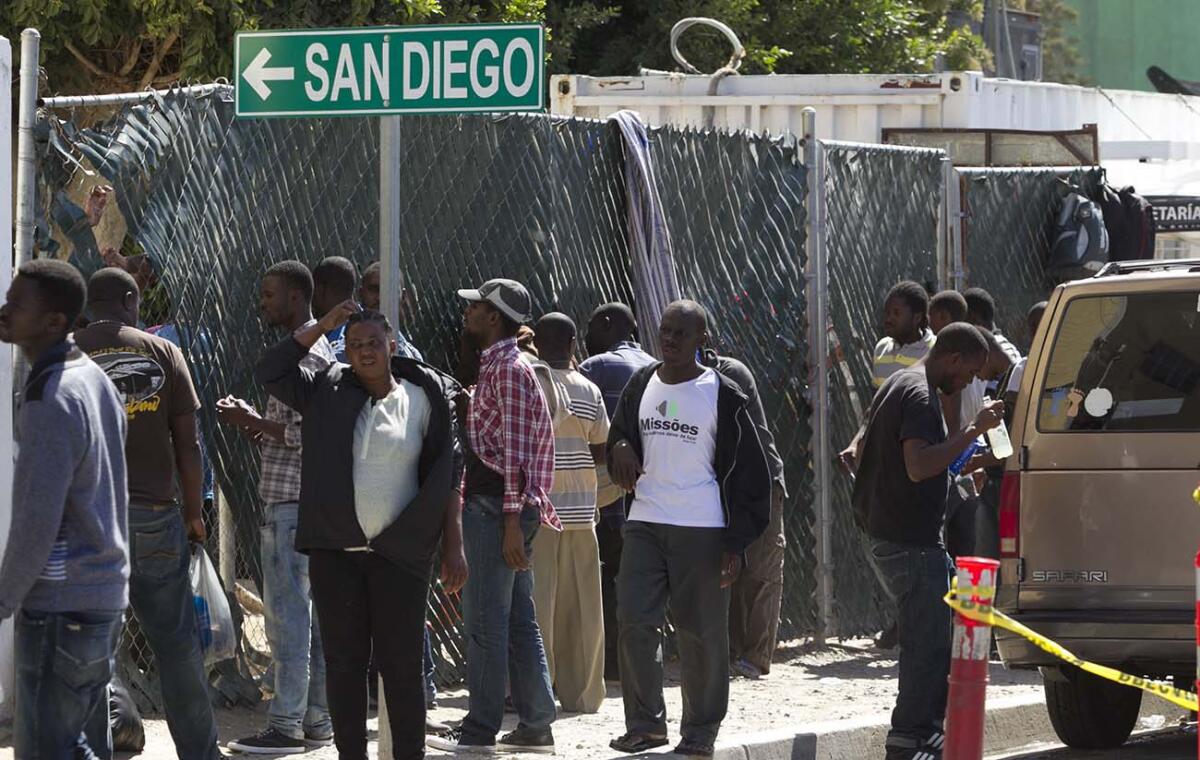
That practice of turning asylum seekers away at ports of entry grew under Trump as the metering program restricted how many of them officials could process on a given day, leading to months-long waits along the U.S.-Mexico border.
The Trump administration implemented “Remain in Mexico” in 2019, which obligated asylum seekers to wait in Mexico for the duration of their U.S. immigration court proceedings, further eroding their access to U.S. soil.
Then came Title 42.
Now the Biden administration seeks to continue the trend.
“The difference is in the rhetoric, and that’s basically it,” said Pedro Rios, director of the American Friends Service Committee’s U.S.-Mexico Border Program.
Responding to forced displacement
Efforts to deter migration only lead to short-term changes in the numbers of arriving asylum seekers, according to many advocates and human rights observers.
After a time, people find other ways to come — ways that are often riskier. As border policies have grown more restrictive, deaths of those trying to get inside undetected have reached record highs.
Experts say the shift is in response to restrictive border policies that put migrants at increasing danger as they are pushed farther out to the high seas
“Everybody knows that horrible things are happening at the U.S.-Mexico border, and everybody knows that the Biden administration is doing lots of things to reject them, but [asylum seekers] feel they don’t have a choice,” Isacson said.
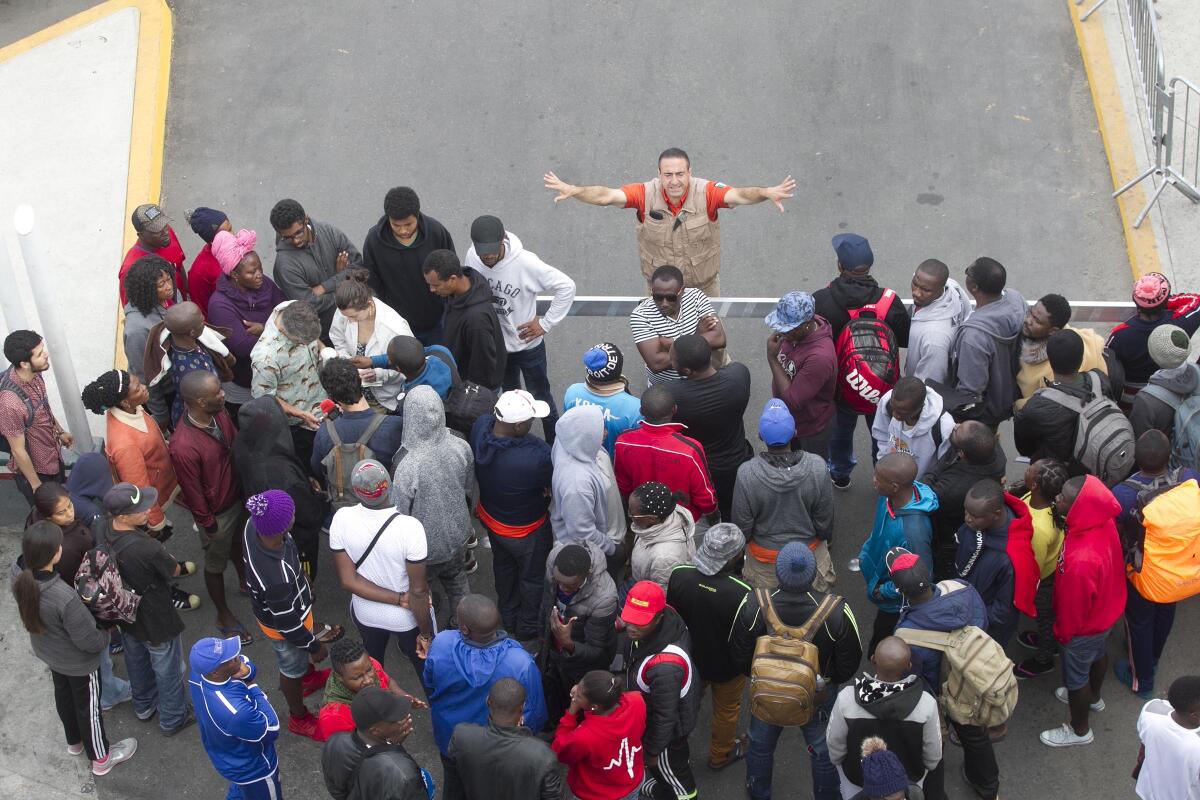
On Wednesday, the Washington-based American Immigration Council released a report outlining an alternative vision for the border. It calls for some steps that the Biden administration says it is taking, including increasing capacity to process refugees throughout the region and alternative pathways for people to come to the United States.
The report also calls for creating centers near the border where government officials and nongovernment organizations would work together to process arriving asylum seekers without placing them in custody.
The report emphasizes the need to mitigate the backlog of asylum cases of those waiting in the United States by expanding the capacity of immigration courts and asylum offices. Right now, according to the report, asylum cases take more than four years on average to finish, keeping those who need protection in limbo while allowing those who don’t qualify to establish lives in the U.S.
Jorge Loweree of American Immigration Council said that part of the problem is the asylum system is not designed to meet the current moment.
As of 2022, more than 40 million people worldwide were forced to leave their countries or were considered stateless, according to the United Nations refugee agency. Roughly 27 million have been screened and recognized as refugees. An additional 5 million or so are seeking asylum and hoping to be recognized as refugees.
Despite calls from the Biden administration for other countries in the Western Hemisphere to take in more asylum seekers, the United States is not the top host country — even in the region.
“It doesn’t give the United States credibility as a leader in border management,” said Dara Lind of American Immigration Council. “If we are a hemispheric leader, it can’t just be because we’ve gotten other countries to house people we don’t want.”
Globally, Turkey, Colombia and Germany are hosting the most forcibly displaced people, according to a Union-Tribune analysis of data from the United Nations refugee agency. The United States is fifth.
Castillo writes for the Los Angeles Times, Morrissey for the San Diego Union-Tribune. Times staff writer Courtney Subramanian contributed to this report.


